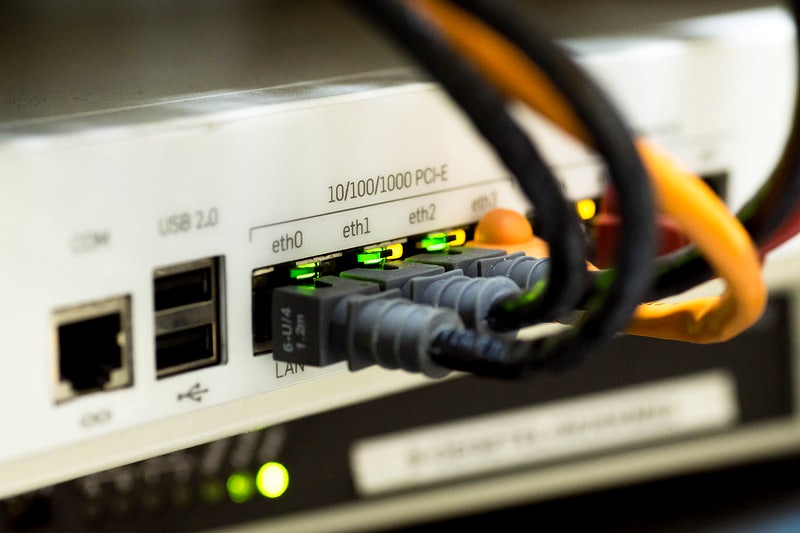Planners play a key role in addressing the digital divide and ensuring communities in northeastern Illinois have access to broadband internet. As with all infrastructure projects, planners must identify existing assets and gaps, understand community priorities, and develop strategies to fund and deliver projects that achieve community goals.
Communities need to integrate broadband planning as a critical component of their long-term visions alongside standard plan considerations, such as housing, transportation, and environment. In the near term, planners can address broadband planning in their communities and set a path toward more equitable internet access in several ways:
Include broadband in comprehensive plans.
Some states that mandate comprehensive planning, such as Georgia and Virginia, now require communities to include broadband. The U.S. Census Bureau data analysis on broadband infrastructure coverage and use should be included as critical community characteristics when considering plan recommendations.
When developing a comprehensive plan, planners should include broadband infrastructure in their review of existing conditions, public engagement, and plan recommendations. Planners should analyze available spatial data on broadband infrastructure to assess coverage and inform plan recommendations. Officials also should engage residents to help them understand access barriers and prioritize projects that can address the digital divide.
Initiate strategic plans and feasibility studies.
Planners can serve communities by completing broadband strategic planning at neighborhood, municipal, subregional, and county levels. Communities throughout the region need assessments around conditions, assets, and barriers to access, as well as strategies that provide a path for broadband coverage.
Illinois provides numerous planning resources that can be leveraged by communities to close the digital divide and align local planning. The state has established the Illinois Office of Broadband, completed the Connect Illinois Broadband Strategic Plan, and created the Illinois Connected Communities (ICC) program, which provides communities with grants and planning assistance. The ICC provides a year-long curriculum and supports local planning efforts to expand broadband and improve internet access in community and economic development, education, civic engagement, health care, agriculture, and other areas. The Illinois Office of Broadband also recently announced awarding $350 million in grants to promote broadband access as part of a third round of Connect Illinois funding. The office said it will accept and award grants to applicants on a rolling basis through 2024.
Refine tools to plan for broadband.
In Georgia, the Institute of Government recently improved mapping methods to better measure access within census tracts and develop solutions through more granular mapping of households served. This effort revealed poorly connected census tracts that were previously incorrectly categorized as well-connected. Illinois also hosts broadband data and in July 2021 launched a statewide interactive map that allows users to assess the attributes of broadband access.
Build multi-jurisdictional coalitions.
In 2013, McHenry County, Woodstock, McHenry County College, and Woodstock Community Unit School District 200 formed a consortium to address the lack of broadband infrastructure. The group was created to work collaboratively and identify more than 15 miles of infrastructure to expand broadband access across boundaries and achieve cost savings. Construction of this segment was completed in 2018, and the group is currently planning further expansion. The initial effort began with community engagement and data analysis to understand local needs and leveraged the partners’ consensus to access funding and accelerate deployment.
Develop programs and policies to decrease the digital divide and implement plans.
Across the country, creative solutions are being explored to address the digital divide. In Chicago, the Coalition for a Better Chinese-American Community began hosting digital literacy workshops for Cantonese and Mandarin Chinese speakers to teach basic skills, like accessing the internet and fraud protection.
Chicago Connected, a public-private partnership that launched in June 2020, works with local internet service providers to offer high-speed internet at no cost for eligible families. The program is ambitious, seeking to provide citywide access for students in need through 2024. Partners came together during the pandemic to address the widening digital divide, develop a project proposal, and deploy it to strengthen community resilience.
Cook County has led digital equity efforts through projects, such as the Chicago Southland Fiber Network. Partners have developed the network over the past decade and recently awarded nearly $2 million in Connect Illinois funds to expand it to additional communities.
Planners are well-suited to foster collaborations between local governments, states, and telecommunications companies to provide equitable broadband access for communities. Additionally, planners can identify funding sources aligned with community needs and help craft data-driven, high-quality grant applications to obtain infrastructure funding. Planners in areas that have the infrastructure but are faced with affordability challenges can build programs to connect people to public access points, publicize low-cost subscriptions, and ensure community partners offer digital literacy education.


